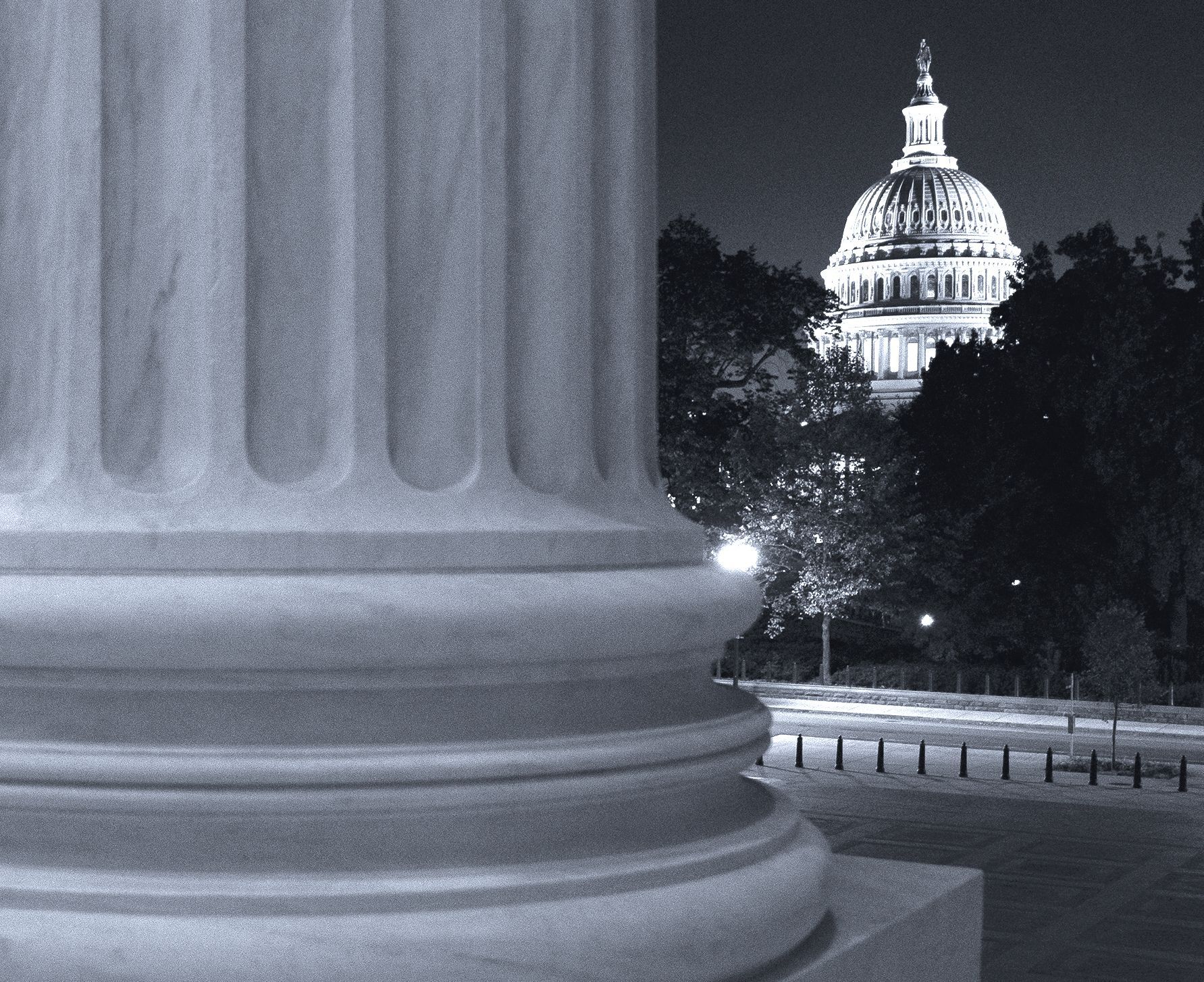
President Biden launched an effort to establish a federal digital assets policy strategy and coordinate the related work of federal regulators by signing the Executive Order on Ensuring Responsible Development of Digital Assets (the EO) on March 9, 2022. Citing the increased adoption and growing development of digital assets, the EO sets forth six main objectives: consumer and investor protection; financial stability; mitigation of illicit finance and national security risks; U.S. leadership in the global financial system and economic competitiveness; financial inclusion; and responsible innovation. Additionally, the EO calls for continued research into a U.S. Central Bank Digital Currency (CBDC).
While not yet prescribing rules for the private sector, the EO signals that the U.S. government recognizes the burgeoning impact of digital assets, including cryptocurrency, and further signals the U.S. government's intent to regulate in the future, while seeking to ensure that the U.S. remains a leader in the digital asset and financial sectors. Throughout the EO, there is a particular emphasis on transparency, privacy and security, cross-border cooperation, and U.S. leadership in the global financial system.
The EO is somewhat technology-agnostic. While it deals with digital assets and cryptocurrencies generally, it does not call out specific coins or technologies that raise particular policy concerns or that the U.S. government should seek to support. Digital assets are defined broadly to include "all CBDCs, regardless of the technology used, and … other representations of value, financial assets and instruments, or claims that are used to make payments or investments, or to transmit or exchange funds or the equivalent thereof, that are issued or represented in digital form through the use of distributed ledger technology." Interestingly, the EO does not focus on the components of the definition of digital assets or reference whether any digital asset constitutes a security. Additionally, the EO does not request that the U.S. Securities and Exchange Commission (SEC) clarify whether digital assets may be securities or provide any additional guidance on that issue and the EO generally gives the SEC a limited role. This may be interpreted as a significant rebuke to the SEC, and possibly reflects a recognition within the Biden administration that the SEC's years-long failure to develop a coherent regulatory approach governing digital assets means that the SEC may or will effectively be supplanted as the chief federal regulator of digital assets.
Based on the EO, companies in the digital asset industry can expect significant changes in policy—most likely in the form of additional regulation and enforcement—but the efforts and coordination envisioned by the EO could also provide additional clarity to the market and actors in it.
The EO directs federal agencies to conduct a broad review of their policies related to digital assets, and to submit reports proposing the necessary regulatory and legal changes to achieve the specified objectives. A table outlining the various reports and frameworks required by the EO is set forth at the end of this advisory.
- Central Bank Digital Currency: The EO places the highest level of urgency on research and development efforts of the potential design and deployment options of a U.S. CBDC. The EO emphasizes the need to assess both the risks and benefits of a potential CBDC, including systemic risks and risks to financial stability, payment systems, national security, the ability to exercise human rights, and financial inclusion and equity. The EO also specifies that any future CBDC that may be developed must be designed in a way that promotes democratic values, including privacy and consumer protections.
- Consumer Protection and Financial Inclusion: The EO notes the need for safe, affordable, and accessible financial services as well as reduced costs for domestic and cross-border funds transfers and payments. The EO also recognizes the need to ensure that necessary safeguards are in place to protect consumers, investors, and businesses. The EO directs the appropriate agencies to evaluate the extent to which existing investor and market protection measures, and privacy and consumer protection measures, may be used to address the risks of digital assets and whether additional measures are required.
- Financial Stability: The EO notes that digital asset issuers, exchanges, trading platforms, and intermediaries, whose activities may increase risks to financial stability, should be subject to and in compliance with regulatory and supervisory standards that govern traditional market infrastructures and financial firms. However, digital assets have new and unique characteristics that may require additional regulations to adequately address the additional risks that digital assets pose to financial stability and financial market integrity. The EO places responsibility the Financial Stability Oversight Council (FSOC) to assess these risks.
- Illicit Finance and National Security Risks: The EO notes that the growing use of digital assets in financial activity increases the risks of illicit activities and calls for coordinated action from all relevant agencies to address these issues. However, the EO does not focus extensively on sanctions evasion as a concern.
- U.S. Leadership in the Global Financial System and Economic Competitiveness: The EO also focuses on the U.S. maintaining its leadership in the global financial system and in technological and economic competitiveness. The EO highlights the importance of cross-border cooperation in technology-driven financial innovation to reduce the risks to financial stability, consumers, investors, and businesses.
- Responsible Development and Use of Digital Assets: The EO promotes the responsible development of digital asset technology, with particular focus on the environmental and climate impacts. The EO also seeks to promote responsible development, design, and implementation of digital asset systems that include privacy and security in their architecture.
The EO does not immediately change the way digital assets are regulated; however, it is the beginning of a process to create a regulatory framework addressing the various aspects of digital assets. The EO signals the U.S. recognition of the importance of digital assets and blockchain technology in the global financial system and the desire for the U.S. to remain a leader in the global financial system through the responsible development of payment innovations and digital assets.
For more information about the regulation of virtual currencies and other digital assets, please contact Wilson Sonsini attorneys Rob Rosenblum, Amy Caiazza, Josh Kaplan, Stephen Heifetz, or another member of Wilson Sonsini's national security group or the blockchain and cryptocurrency subgroup, which is located within the securities regulatory and complex transactions group.
| Section | Timeframe | Lead Agency | Other Agencies Involved | Description |
| Central Bank Digital Currency | ||||
| Section 4(b) | 180 days | Secretary of the Treasury | Secretary of State, Attorney General, Secretary of Commerce, Secretary of Homeland Security, Director of the Office of Management and Budget, Director of National Intelligence, and the heads of the other relevant agencies | Report on the future of money and payment systems, including the conditions that drive broad adoption of digital assets; the extent to which technological innovation may influence these outcomes; and the implications for the United States financial system, the modernization of and changes to payment systems, economic growth, financial inclusion, and national security. |
| Section 4(a) | N/A | Federal Reserve | N/A | Continue to research and report on the extent to which CBDCs could improve the efficiency and reduce the costs of existing and future payments systems as well as whether a United States CBDC would impact the ability of monetary policy to function as a macroeconomic stabilization tool. |
| Section 4(d)(i) | 180 days | Attorney General | Secretary of the Treasury and Chairman of the Federal Reserve | Assessment of whether legislative changes would be necessary to issue a United States CBDC. |
| Section 4(d)(ii) | 210 days | Attorney General | Secretary of the Treasury and Chairman of the Federal Reserve | Legislative proposal based on considerations of the report submitted by the Secretary of Treasury regarding the future of money and payment systems. |
| Section 5(b)(ii) | 180 days | Director of the Office of Science and Technology Policy and Chief Technology | Secretary of the Treasury, Chairman of the Federal Reserve, and the heads of the other relevant agencies | Technical evaluation of the technological infrastructure, capacity, and expertise that would be necessary at relevant agencies to facilitate and support the introduction of a CBDC system. |
| Consumer Protection and Financial Inclusion | ||||
| Section 5(b)(i) | 180 days | Secretary of the Treasury | Secretary of Labor and the heads of the other relevant agencies, including, as appropriate, the heads of independent regulatory agencies such as the FTC, the SEC, the CFTC, Federal banking agencies, and the CFPB | Report addressing the implications of developments and adoption of digital assets and changes in financial market and payment system infrastructures for United States consumers, investors, businesses and assessing the risks and opportunities that are posed by the adoption of digital assets. The report must also include policy recommendations as well as potential regulatory and legislative actions necessary to protect United States consumers, investors, and businesses. |
| Section 5(b)(iii) | 180 days | Attorney General | Secretary of the Treasury and Secretary of Homeland Security | Report on the role of law enforcement agencies in detecting, investigating, and prosecuting criminal activity related to digital assets, which will include regulatory and legislative recommendations. |
| Section 5(b)(iv) | N/A | Attorney General, Chair of the FTC and Director of the CFPB | N/A | Consider the extent to which privacy or consumer protection measures within their respective jurisdictions may be used to protect users of digital assets and whether additional measures may be needed. |
| Section 5(b)(v) | N/A | Chair of the SEC, Chairman of the CFTC, Chairman of the Federal Reserve, Chairperson of the Board of Directors of the Federal Deposit Insurance Corporation, and Comptroller of the Currency | N/A | Consider the extent to which investor and market protection measures within their respective jurisdictions may be used to address the risks of digital assets and whether additional measures may be needed. |
| Financial Stability | ||||
| Section 6(b) | 210 days | Secretary of the Treasury | FSOC | Report outlining the specific financial stability risks and regulatory gaps posed by various types of digital assets and providing recommendations to address such risks. |
| Illicit Finance and National Security Risks | ||||
| Section 7(b) | 90 days | Secretary of the Treasury | Secretary of State, Attorney General, Secretary of Commerce, Secretary of Homeland Security, Director of the Office of Management and Budget, Director of National Intelligence, and the heads of other relevant agencies | Each agency may submit supplemental annexes to the National Strategy for Combating Terrorist and Other Illicit Financing (the "Strategy"), offering additional views on illicit finance risks posed by digital assets, including cryptocurrencies, stablecoins, CBDCs, and trends in the use of digital assets by illicit actors. |
| Section 7(c) | 120 days | Secretary of the Treasury | Secretary of State, Attorney General, Secretary of Commerce, Secretary of Homeland Security, Director of the Office of Management and Budget, Director of National Intelligence, and the heads of other relevant agencies | Coordinated action plan based on the Strategy's conclusions for mitigating the digital‑asset-related illicit finance and national security risks addressed in the Strategy, which shall address he role of law enforcement and measures to increase financial services providers' compliance with AML/CFT obligations related to digital asset activities. |
| Section 7(d) | 120 days following completion of each of the National Money Laundering Risk Assessment, the National Terrorist Financing Risk Assessment, the National Proliferation Financing Risk Assessment, and the updated National Strategy for Combating Terrorist and Other Illicit Financing | Secretary of the Treasury | N/A | Notify the relevant agencies on any pending, proposed, or prospective rulemakings to address digital asset illicit finance risks and consult with such relevant agencies in evaluating opportunities to mitigate such risks through regulation. |
| International Cooperation | ||||
| Section 8(b)(i) | 120 days | Secretary of the Treasury | Secretary of State, Secretary of Commerce, Administrator of the United States Agency for International Development, and the heads of the other relevant agencies | Framework for interagency international engagement with foreign counterparts to promote the adoption of global principles and standards for digital assets. |
| Section 8(b)(ii) | 1 year from the establishment of the 8(b)(i) framework | Secretary of the Treasury | Secretary of State, Secretary of Commerce, Administrator of the United States Agency for International Development, and the heads of the other relevant agencies | Report to the President on priority actions taken under the framework and its effectiveness. |
| Section 8(b)(iii) | 180 days | Secretary of Commerce | Secretary of State, Secretary of the Treasury, and the heads of the other relevant agencies | Framework for enhancing United States economic competitiveness in, and leveraging of, digital asset technologies. |
| Section 8(b)(iv) | 90 days | Attorney General | Secretary of State, Secretary of the Treasury, and Secretary of Homeland Security | Report with strategies to strengthen international law enforcement cooperation for detecting, investigating, and prosecuting criminal activity related to digital assets. |
| Responsible Development and Use of Digital Assets | ||||
| Section 5(b)(vii) | 180 days | Director of the Office of Science and Technology Policy | Secretary of the Treasury, Secretary of Energy, Administrator of the Environmental Protection Agency, Chair of the Council of Economic Advisers, Assistant to the President and National Climate Advisor, and the heads of other relevant agencies | Report detailing the connections between distributed ledger technology and economic and energy transitions, the effect these technologies may have on tackling climate change and potential impacts on the environment. |
| Section 5(b)(viii) | 1 year from the submission of the 5(b)(vii) report | Director of the Office of Science and Technology Policy | Secretary of the Treasury, Secretary of Energy, Administrator of the Environmental Protection Agency, Chair of the Council of Economic Advisers, Assistant to the President and National Climate Advisor, and the heads of other relevant agencies | Update the report described in section 5(b)(vii) of this order, including to address any knowledge gaps identified in such report. |
Contributors
- Privacy Policy
- Terms of Use
- Accessibility


